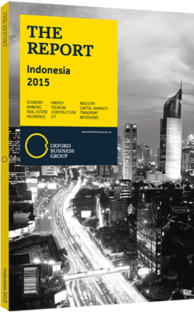Benefits and drawbacks to slowing development of shopping centres in Indonesia
Following concerns that a boom in the construction of retail malls was causing increased congestion, as well as threatening the livelihoods of many smaller retail operators, in 2011 Jakarta’s then-governor Fauzi Bowo initiated a moratorium on further mall building. Since then, this moratorium has been renewed by his successors. The freeze on mall development has had a major impact on the modern retail sector in Jakarta, with the supply of new mall space now reduced to a trickle. Indeed, the only entrant in 2014 was the Lippo Group’s St Moritz Mall, boosting Jakarta’s total modern retail space stock to 2.8m sq metres, according to global real estate services firm Savills.
Bigger Picture
At the same time, the economic slowdown – GDP growth went from 6.5% in 2011 to 5% in 2014, according to World Bank figures – added to the retail sector’s challenges. Consumers began to spend less as per capita incomes held steady, with this pattern exacerbated further by increases in fuel prices in 2014, which spiked some 30% due to the removal of some of their state subsidy. High interest rates also held back consumer spending; base rates were at 7.5% for most of 2014, hiking to 7.75% in November, before returning to 7.5% in February 2015. These were kept high to keep a check on inflation, which averaged 6.42% in 2014, with a high of 8.36% in December.
All these factors have had an impact on the retail real estate sector. According to real estate advisor Savills, this retail stock in Jakarta consists of 15% high-end, 30% prime quality and 40% middle-quality space. Average occupancy rates had remained relatively stable, at around 90%, over the last three years. Global property services firm Cushman & Wakefield estimates the 2014 occupancy rate to be lower, at 85.3%, the result of a slight 1.8% increase in vacancies year-on-year. This discrepancy is likely in part due to the accountancy methods for determining modern retail space. The average retail space rent was up 0.8% year-on-year in the second half of 2014, according to Savills, with middle- and low-grade showing the strongest rise, at 3.6%.
Given the continued moratorium, future supply will be limited – just 396,000 sq metres is due to enter the market between 2014 and 2018. Thus, the occupancy rates on existing malls should rise further. Indeed, in 2014 Japanese retailer Uniqlo expanded its business with a sixth store in Grand Indonesia, while American Eagle opened its first Indonesian store in the same mall. Nevertheless, according to Cushman & Wakefield, many of the new openings filled spaces vacated by other stores, perhaps victims of the economic slowdown, keeping the occupancy rate stable.
More Supply
In 2015 a number of new retail outlets are still scheduled to come on stream, having received licences before the moratorium. These include the completion of the St Moritz mall, an extension to Central Park, and Mal Pantai Indah Kapuk. New retail space is also likely to focus on mixed-use developments going forward, taking space in residential or hotel projects unaffected by the moratorium. An example of this already under way is the Pusat Grosir Metro Cipulir, a trade centre, which will have some retail space.
As for rents, stiff competition between existing projects may keep down any major hikes in rents, particularly at a time of consumer conservatism. Cushman & Wakefield gives an average rent for Jakarta retail of Rp678,200 ($56) per sq meter per month in the fourth quarter of 2014, ranging between Rp596,000 ($49.30) for secondary locations and Rp870,000 ($71.90) for primary, with a stable 12-month outlook.
As for the moratorium itself, it may help focus retail developers away from Jakarta, with Yogjakarta, Surabaya, Medan, Makassar and Mandano receiving more interest. Kam Kettin, president-director of building materials retailer Depo Bangunan, told OBG, “Although West Java is and will continue to be the centre of industry in Indonesia, secondary cities such as Surabaya and Medan are currently experiencing unprecedented economic growth and attracting high levels of investment.” Retailers and retail developers are also applying more pressure, and 2015 will see if the new president responds.
You have reached the limit of premium articles you can view for free.
Choose from the options below to purchase print or digital editions of our Reports. You can also purchase a website subscription giving you unlimited access to all of our Reports online for 12 months.
If you have already purchased this Report or have a website subscription, please login to continue.

